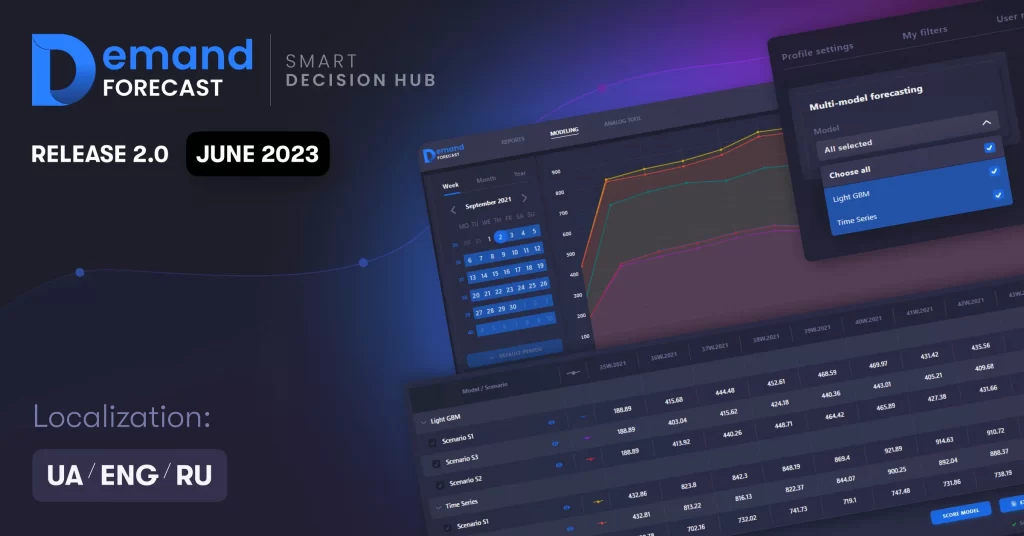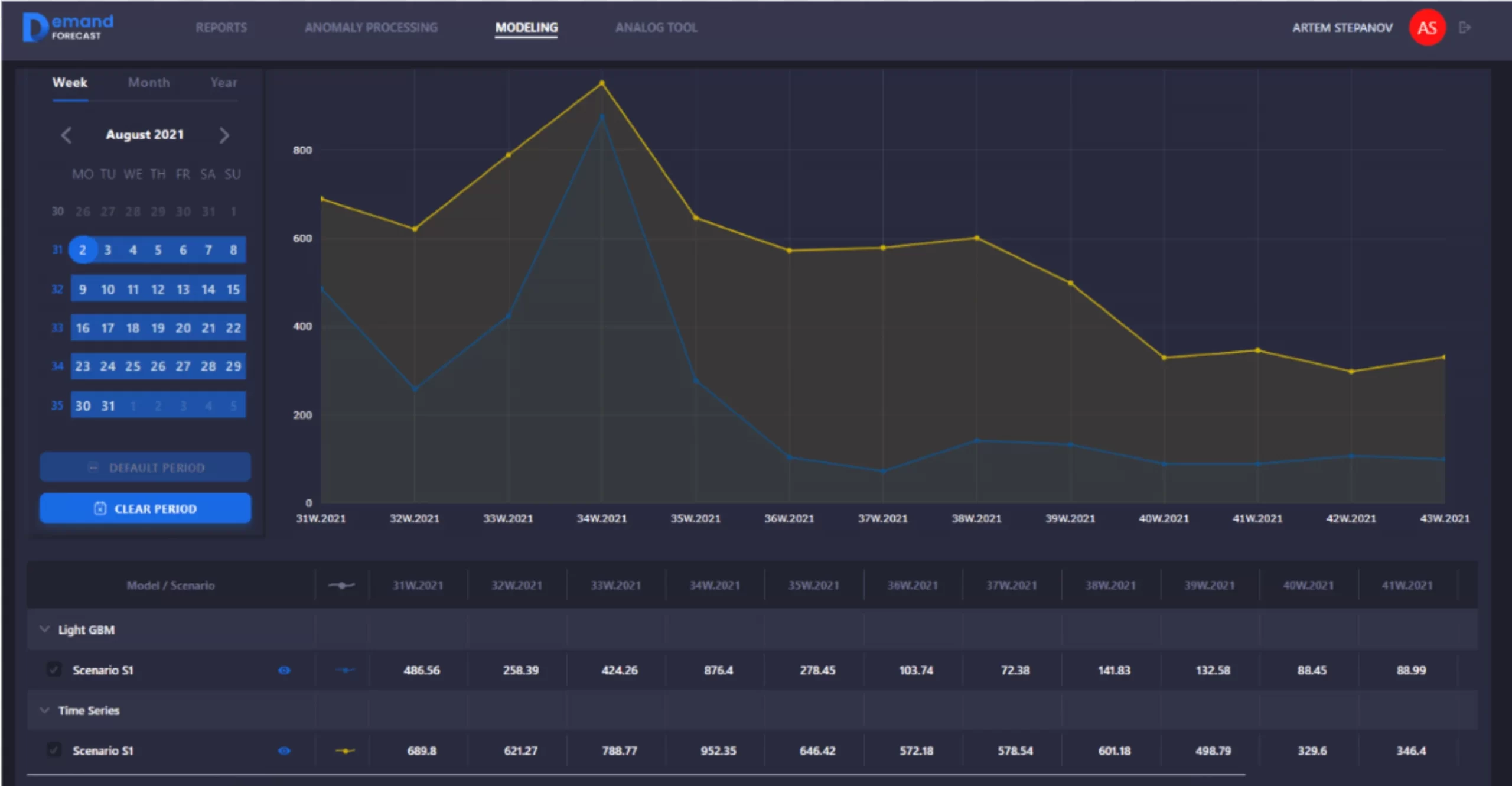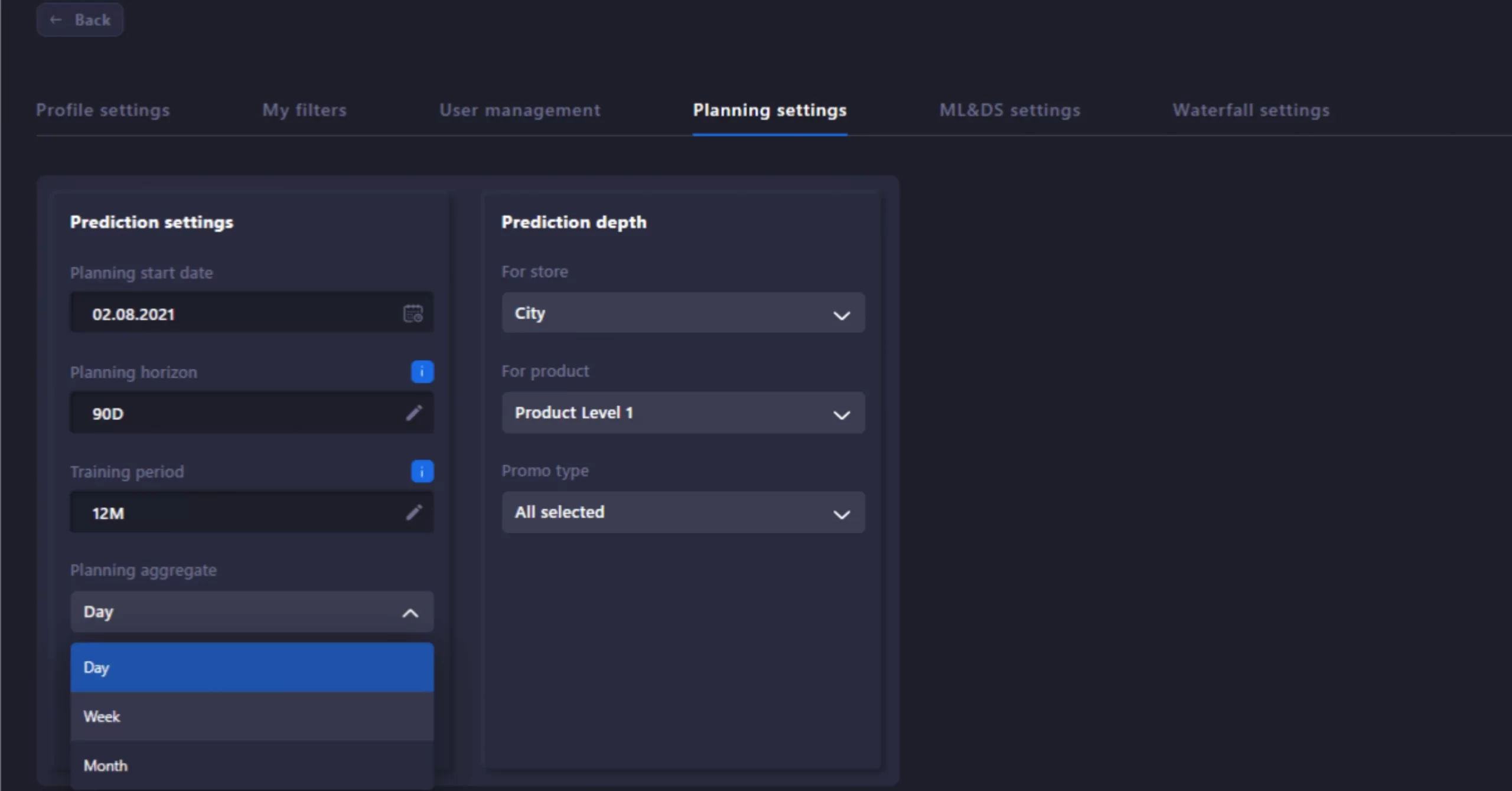28 Jun 2023 6 MIN READ
New capabilities of SMART Demand Forecast. Release 2.0

A successful supply chain starts with accurate demand forecasting. Supply chain managers constantly challenge themselves to determine the optimal order quantity that meets customer needs, helps to avoid overstocking and write-offs, and ensures a high level of service.
According to McKinsey & Company, companies can increase marginal returns by an average of 2-5% and reduce inventory levels by 20-25% by improving forecast accuracy by an average of 10-20%.
To ensure high quality forecasting, solutions like SMART Demand Forecast are used, which are based on machine learning and artificial intelligence algorithms. The SMART business team works daily to improve the functionality of the demand forecasting system to provide you with the best user experience.
In this update, we introduced a clustering algorithm for stores and goods for a convenient selection of analogs, modified the promo activity forecasting processes, added a new forecasting model, TFT (Temporal Fusion Transformation) and much more. Read more about all system updates in the article.
A TFT (Temporal Fusion Transformation) prediction model has been added to the advanced subscription.
The implemented TFT (Temporal Fusion Transformation) forecasting model will allow to obtain a higher accuracy of the forecast for long-term periods, which in turn will have a significant impact on the performance of the customer’s business. This will allow your business to be more reactive and adaptive to changing market conditions.

Clustering algorithm for stores and goods for the selection of analogs has been implemented.
The clustering algorithm for store and goods analogs in the system saves time and effort for users, providing them with convenient functionality for quickly finding and comparing the best options. Now you can group similar products and stores into clusters and find similar ones by sales patterns and characteristics.
DevOps developments have been synchronized and updated.
The priority of the team is to provide customers with high-quality and stable operation of the system, as well as reducing the influence of the human factor on the operation of the solution, therefore DevOps processes are an integral part of product quality control. This implemented development will help to improve the system and implement the software more efficiently and faster.
A unified approach to forecasting at higher levels of aggregation by date, business and product levels has been implemented.
A unified approach for building demand forecasts at higher levels of aggregation has been introduced in SMART Demand Forecast. The update simplifies and standardizes the forecasting process. In turn, this helps to improve the quality of the forecast and directly affects the planning and management decision-making processes.

PoC for the approach to forecasting demand for new products using Bass diffusion has been conducted.
When working with new products and stores, forecasting accuracy plays an important role and contributes to building a profitable strategy for their development. The implemented PoC approach using Bass diffusion allows the system to make a qualitative forecast and use this information for strategic planning.
Optimization work and parallelization of the scoring process were performed, which made it possible to speed up forecast preparation by 2.5 times.
A parallel scoring process has been implemented in SMART Demand Forecast. This means that all system tasks are divided into smaller subtasks that can be executed simultaneously on different computing resources. The update was implemented by distributing work between different processors, as well as using parallel computing algorithms. This will allow users of the system to perform more computations simultaneously and quickly receive accurate and efficient solutions that improve the competitiveness and bottom line of the business.
PoC work for the functionality of choosing the optimal set of complex scenarios has been conducted.
The ability to analyze complex combinations of promotional campaigns, events and parameters that can affect the demand forecast built by the system has been added. Users can choose the best scenario and make more accurate management decisions, use resources efficiently and optimize processes in the system. All of these combine to improve productivity and reduce costs.
Modification of promo activity forecasting processes has been performed.
The ability to forecast more than one promotion at one time level has been added to SMART Demand Forecast, which provides system users with greater flexibility in introducing promotion activity variations into the system, assessing their impact on demand and, accordingly, additional opportunities to improve the company’s marketing activities.
Technical and process project documentation has been added. The Environment Policy document has been drawn up.
The availability of documentation is an important aspect that directly affects the work of users in the system, as well as the speed and quality of development. That is why in this release the technical and process project documentation has been added and the Environment Policy has been drawn up. This is important because:
First, technical and process documentation helps users to better understand the system, its functionality, rules of use and related processes. This contributes to more efficient use of the system and reduces misunderstandings.
Secondly, the availability of technical documentation simplifies the development of new system functions, modification and extensions. Developers have access to important information about the architecture and components of the system, which makes their work easier.
Thirdly, the availability of documentation helps the system comply with regulatory requirements and standards, which can be important when working with partners or customers who have their own requirements for the environment and standards for its protection.
Report localization in Power BI has been implemented.
SMART Demand Forecast is now configured to automatically adapt reports to match the language requirements of users. The use of language packages allows analytics to be more understandable and usable for different audiences.
The Data Health Check report has been created.
Quick detection of critical errors or data incompleteness is now possible with the new Data Health Check report. Users can get a visual overview of the state of their data and timely identify and fix issues related to the accuracy and reliability of the data used by the system in the process of training a mathematical model and preparing a forecast.
For more information about SMART business solutions and services, please call +38 (044) 585-35-50 or submit your request.
